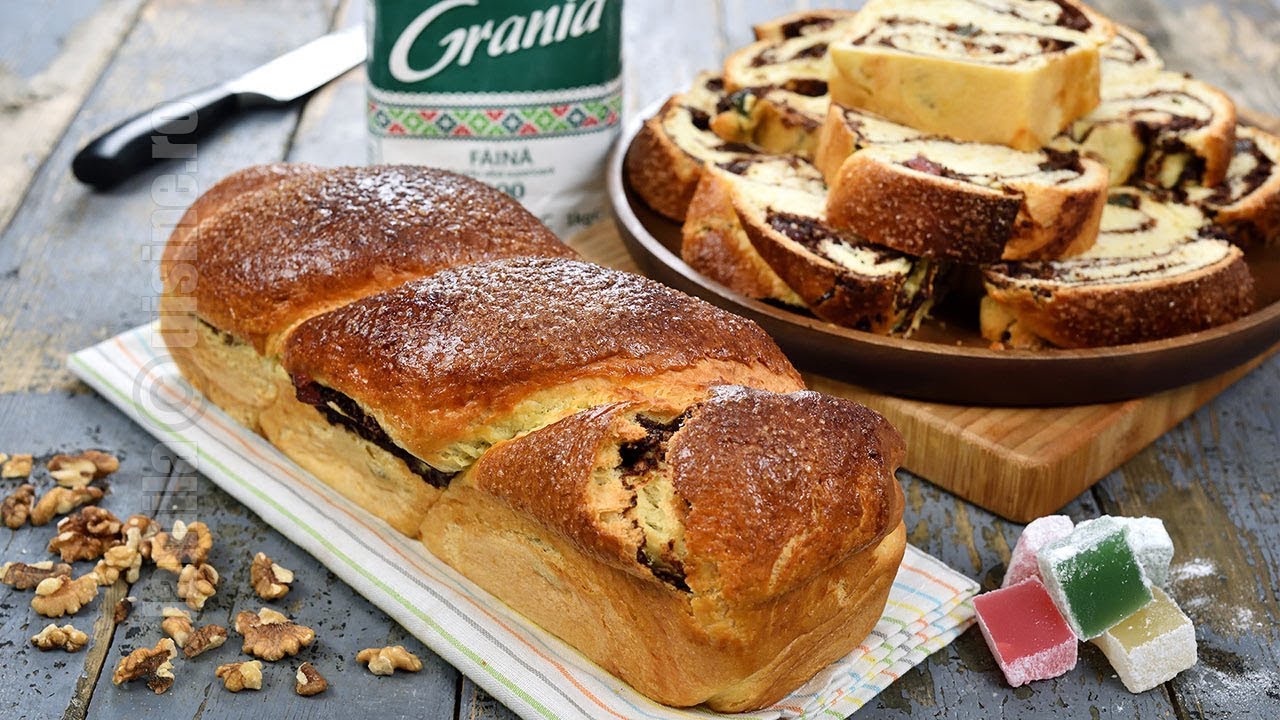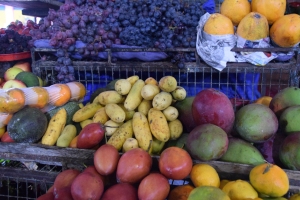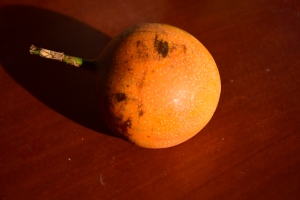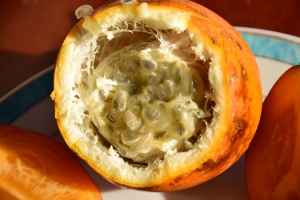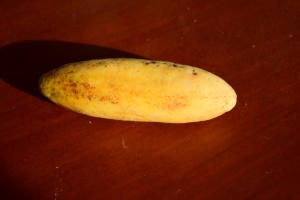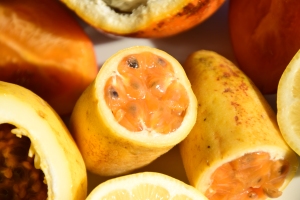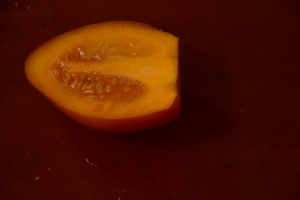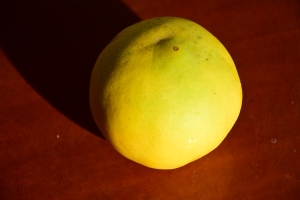Recipes from Asia or with an Asian twist by WorldSupporters - Bundle
Recipes from Asia or with an Asian twist by WorldSupporters
 Asian food
Asian food
A natural plate for natural food (photo from the Philippines)
- Rice
- Octopus adobo (soya sauce and vinegar)
- Gamba's with skin
- Eggplant without skin
Instead of poke bowls, I am making poke plates (so you can still use the banana leaf real fusion)
- Sushi rice
- Peas or edame
- Cucumber with sesame oil
- Omelette in slices or made with silk tofu
- Seaweed for authentic taste
- Avocado
- Sesame seeds
 Recipe: Pad See Ew - Thai noodle dish
Recipe: Pad See Ew - Thai noodle dish
In Thailand you can find the popular Pad Thai on every street corner. Pad See Ew is a bit less well-known, but evenly delicious. It is a simple noodle dish, recognisable by the wide and thin rice noodles that are being used. If you can't find the wide noodles, you can also use another type of noodles.
Recipe:
- Heat oil in a frying pan/wok and fry the garlic over low heat.
- Add the chicken and stir for about one minute
- Then add the kale, carrot, noodles, sugar and sauces and mix. Stir for about 2 minutes
- Make room on one side of the wok and crack an egg on the empty side.
- Sramble the egg and mix with the noodles. Then turn up the heat and fry for about 30 seconds.
- To top off the noodles. Sprinkle a bit of ground pepper, chili flakes or lime on top.
- Enjoy!
Ready In: 30 min.
Ingredients:
- 200 g wide rice noodle
- 1 egg
- 2 pieces of chopped garlic
- 1 stalks kale
- 4-5 pieces of sliced carrots
- 50 g chicken (or tofu)
- 1 tsp sugar
- 2 tsp fish sauce
- 2 tsp dark soy sauce
- 3 tsp oyster sauce
 Recipe: Pad Thai
Recipe: Pad Thai
1. Heat the oil in the wok, add garlic, shallot, chicken, tofu.
2. Add radish, follow with dried shrimp. Stir to combine.
3. Put egg down let them cook then scramble it and mix it well with other ingredient.
4. Pull everything up to one side of the wok, and then pour chicken stalk or water.
5. Put rice noodle then stir well then add sauce to combine until it cook.
6. Finally, add bean sprouts and chive down mix it well. Finish and ready to serve.
Serve with:
- Roasted peanuts
- Chili powder
- Lime
- Sugar
Succes!!
Ready In: 30 min.
Ingredients:
- 70 g. rice noodle
- 50 g. chicken breast sliced
- 3 tbsp firm tofu (1cm thick dice)
- 1 egg
- 3-5 clove. garlic
- 0.5 tbsp. shallot
- 2 tbsp. dried shrimp
- 1-2 stalks. garlic shave
- 0.5 tbsp. minced pickle radish
- 1 cup bean sprout
- 1 cup chicken stalk or water
- 1.5 tbsp. oyster sauce
- 0.5 tbsp. fish sauce
- 0.5 tbsp. palm sugar
- 1 tbsp. tamarind sauce
- 1 tbsp. oil
 Recipe: Spicy Korean ramen (vegan)
Recipe: Spicy Korean ramen (vegan)
I absolutely LOVE ramen. It's one of my favorite dishes in Japan, and fortunately more and more vegan ramen places are popping up in the country. While ramen has its roots in China, because of the use of Chinese noodles, the Japanese have turned it into their own traditional dish. Originally the base of the dish consists of Chinese wheat noodles often in a meat or fish broth, but many variations exist throughout the country such as the famous Hakata ramen from Fukuoka, a milky ramen soup made from pork bones. Other popular, and vegetarian, variations of ramen are Shoyu (soy sauce), Shio (salt) and Miso ramen. As toppings, many ingredients can be used. Often used vegetarian toppings are green onions, boiled eggs, bean sprouts, fermented bamboo shoots, nori (dried seaweed), corn, shiitake and wakame.
Since I was craving spicy food while walking around in our local Asian supermarket, I decided to make my own spicy ramen noodles. I already made miso ramen a couple of weeks ago and while I love it, miso and japanese spicy don't go too well together in my opinion. So I had to think of something new. One thing I'm hooked on is the Korean Gochujang (red chili paste) which is great for bibimbap or spicy Korean rice cakes for example. Since I don't use it too often, one box of paste can last in my fridge for over 6 months, so why not create some more dishes with it!? It probably tastes great as a ramen broth too, right? So I got my veggies and wheat noodles and went home to cook some delicious ramen. I can tell you, it took me by surprise how amazingly tasty (and spicy!) it was :).
1. Cut the tofu into cubes and add the hoisin sauce, soy sauce, a bit of garlic (powder) and oil to it. Stir and let it sit for a while
2. Cut onion and garlic into tiny pieces and fried the onions for a couple of minutes before I added the garlic.
3. Add half a can of diced tomatoes and let it simmer for about a minute.
4. Add the dried shiitake mushrooms and the vegetable stock (don't add too much water since you don't need a huge amount of soup)
5. Combine the gochujang with the soysauce and hoisin (and some broth to make it easier to mix) and add to the broth. Add more soy sauce and/or salt if needed. And more gochujang if you want it more spicy! :)
6. Let it simmer for a while, while you cut the toppings and fry the tofu.
7. Now add the noodles to the broth and cook until done (follow the instructions on the package).
8. Put the noodles into a both, cover it with some broth and top with all your amazing toppings! For garnishing you can use some sesame seeds.
Enjoy! :)
Ready In: 30 min.
Ingredients:
- 4 cups vegetable broth
- 2 tablespoons gochujang
- 2 tablespoons soy sauce for broth
- 1 tablespoon hoisin for broth
- 1 onion for broth
- 3 cloves of garlic for broth
- 150-200 grams of ramen noodles
- 100 grams of tofu
- 1 tablespoon soy sauce for tofu
- 1 tablespoon hoising for tofu
- 1 tablespoon vegetable oil for tofu
- green onions
- corn
- enoki mushrooms
- 8 dried shiitake mushrooms, cut in half
- bean sprouts
- or any other topping of choice!
 Recipes from Japan or with a Japanese twist by WorldSupporters - Bundle
Recipes from Japan or with a Japanese twist by WorldSupporters - Bundle
Recipes from Japan shared by WorldSupporters
 Recipes from the Philippines or with a Filipino twist - Bundle
Recipes from the Philippines or with a Filipino twist - Bundle
Recipes from the Philippines or with a Filipino twist
 Recepten uit Indonesië of met een Indonesische twist van WorldSupporters - Bundel
Recepten uit Indonesië of met een Indonesische twist van WorldSupporters - Bundel
Recepten uit Indonesië of met een Indonesische twist van WorldSupporters
 Recipes from around the world - Bundle
Recipes from around the world - Bundle
Recipes and tips from Indonesia, Japan, Asia, Africa, Europe to South America
- 3650 reads





















